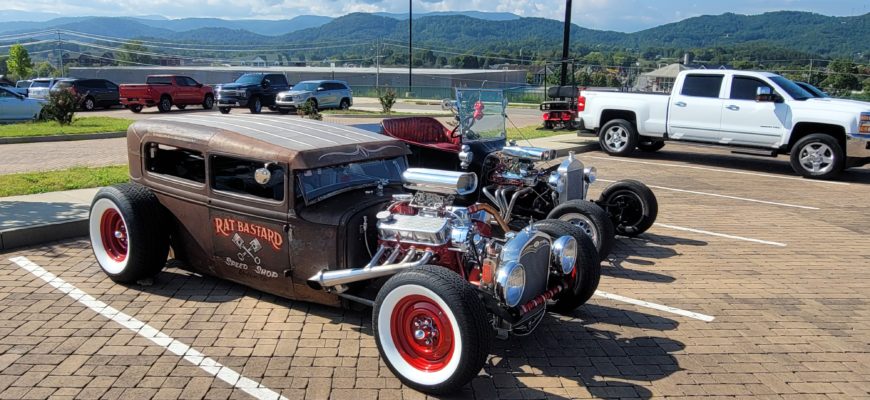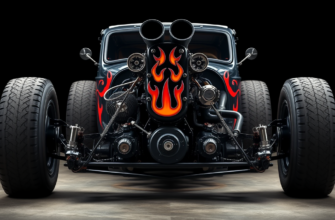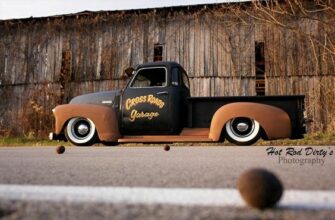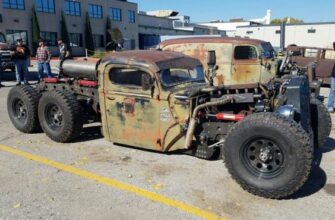The air hangs thick with the scent of oil, rust, and possibility. In workshops and garages across the globe, a unique alchemy takes place – the transformation of forgotten relics into roaring road warriors. This is the realm of the rat rod builder, an artist and a mechanic rolled into one, who sees potential where others see scrap. “From Junkyard to Street Legend” encapsulates not just a physical build, but a philosophical journey, fueled by ingenuity, a defiant spirit, and a deep appreciation for the raw essence of the automobile.
- The Scavenger’s Art: Sourcing the Soul of a Rat Rod
- Mechanical Metamorphosis: Making the Mismatched Mighty
- The Patina as Canvas: Embracing the Beauty of Decay
- The Attitude Embodied: More Than Just a Machine
- From Scrap Heap to Street Presence: The Transformation Complete
- The Enduring Legacy: Why the Rat Rod Roars On
The Scavenger’s Art: Sourcing the Soul of a Rat Rod
The journey of a rat rod often begins in the hallowed grounds of the junkyard, the swap meet, or even the dusty corners of forgotten barns. Unlike traditional restorations that seek out specific, often pristine, original parts, the rat rod builder is a resourceful scavenger, with an eye for potential in the discarded. A rusty frame from a 1930s pickup might become the backbone, while a mismatched engine from a later era promises raw power. Headlights from a forgotten tractor could add a unique visual signature, and a repurposed ammunition box might serve as a quirky storage compartment.
This process demands a unique kind of vision. It’s not about replicating a factory finish; it’s about seeing the beauty in decay, the strength in salvaged components, and the potential for a new, unique identity to emerge from the remnants of the past. The selection of parts is not random, but rather a deliberate curation, driven by both necessity and an artistic sensibility that appreciates the patina of time and the character of well-worn components.
Mechanical Metamorphosis: Making the Mismatched Mighty
Once the disparate parts are gathered, the true challenge begins: the mechanical metamorphosis. Integrating components from different eras and manufacturers requires a deep understanding of automotive mechanics, fabrication skills, and a healthy dose of problem-solving ingenuity. Engine swaps, transmission adaptations, and suspension modifications are common, often requiring custom-fabricated mounts, linkages, and wiring harnesses.
This stage is where the “legend” truly begins to take shape. It’s not just about bolting parts together; it’s about making them work in harmony, often in ways the original engineers never intended. The focus is typically on raw functionality and reliable power, rather than pristine refinement. Exposed mechanicals are not a sign of unfinished work, but rather a celebration of the machine’s inner workings, a testament to the builder’s skill in bringing these disparate elements together.
The Patina as Canvas: Embracing the Beauty of Decay
Perhaps the most visually defining characteristic of a rat rod is its intentional embrace of age and wear. The “patina” – the faded paint, surface rust, and minor imperfections accumulated over decades – is not something to be erased but rather celebrated as a unique canvas, telling the story of the vehicle’s past. Builders often go to great lengths to preserve this natural aging, sometimes even applying clear coats to protect the existing rust while maintaining its raw aesthetic.
This is where the “art” truly shines. The builder is not just assembling a vehicle; they are curating a visual narrative. The juxtaposition of weathered surfaces with carefully chosen details – perhaps a hand-painted pin-stripe or a thoughtfully placed vintage accessory – creates a unique aesthetic that is both raw and refined in its own way. The goal is not perfection, but character.
The Attitude Embodied: More Than Just a Machine
A rat rod is more than just a collection of old parts; it embodies a distinct attitude. It’s a rejection of the overly polished and often impersonal nature of modern consumerism. It’s a statement of independence, a celebration of individuality, and a nod to a time when things were built to last and repaired with ingenuity.
The attitude extends beyond the vehicle itself to the builder and the owner. There’s often a strong sense of community among rat rod enthusiasts, a shared appreciation for the unconventional, and a willingness to get their hands dirty. These are not machines for the faint of heart; they demand attention, a degree of mechanical understanding, and a willingness to embrace the unexpected.
From Scrap Heap to Street Presence: The Transformation Complete
The culmination of the rat rod build is the moment it takes to the streets. What was once a collection of forgotten parts has been reborn as a unique, head-turning machine with a story to tell. The rumble of the often-unmuffled engine, the raw and unapologetic aesthetic, and the sheer presence of a vehicle unlike any other command attention.
This is the “street legend” in the making. Each rat rod carries the spirit of its builder, the history of its components, and an undeniable attitude that sets it apart. It’s a rolling testament to the fact that beauty can be found in the unexpected, that ingenuity can breathe new life into the discarded, and that sometimes, the most compelling stories are written in rust and grit.
The Enduring Legacy: Why the Rat Rod Roars On
The rat rod movement continues to thrive because it taps into something fundamental: a desire for authenticity, a celebration of individuality, and a connection to the raw, visceral experience of the automobile. In a world increasingly dominated by mass-produced perfection, the rat rod stands as a defiant and artistic statement, proving that true character is often found not in flawless beauty, but in the scars of time and the ingenuity of the human spirit. From the junkyard’s forgotten corners to the open road, the rat rod embodies the art and attitude of building something truly unique, a legend forged in rust and roaring with untamed spirit.
(0)








